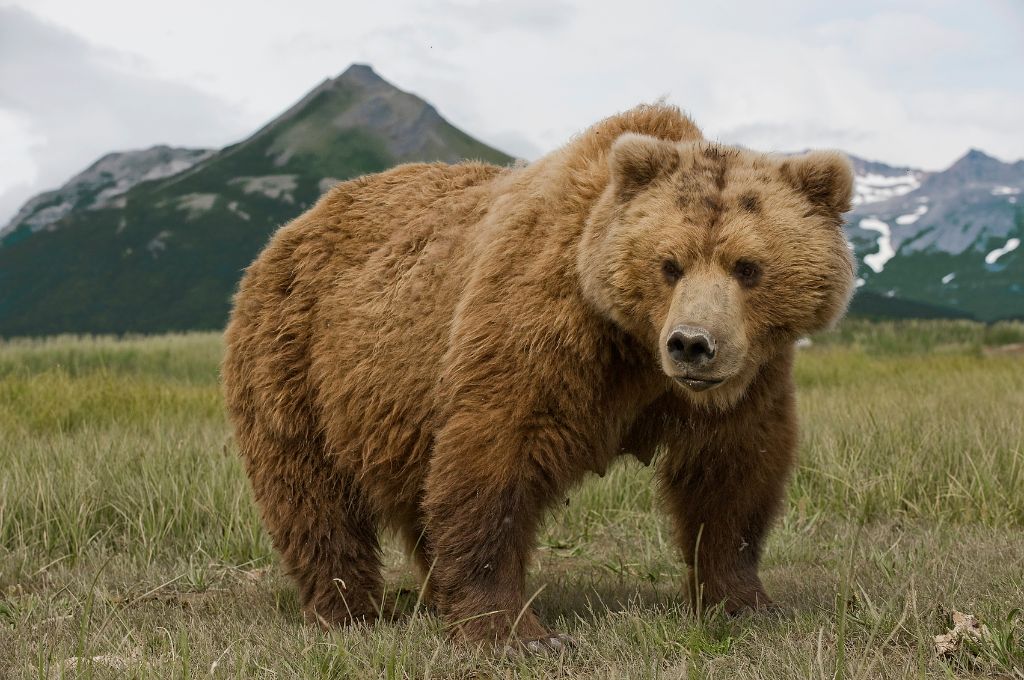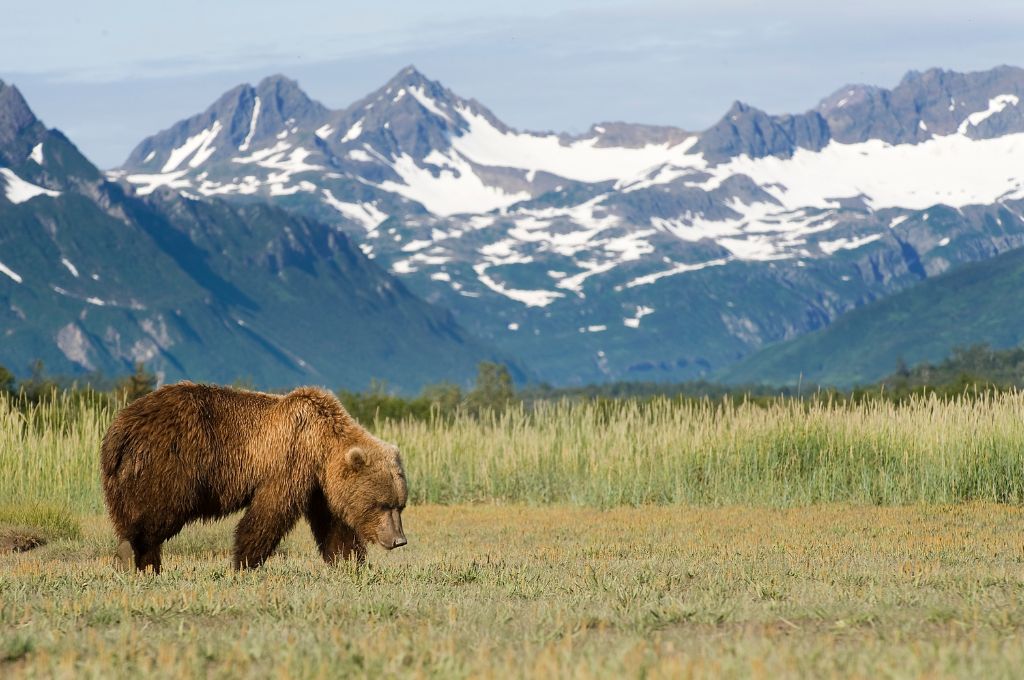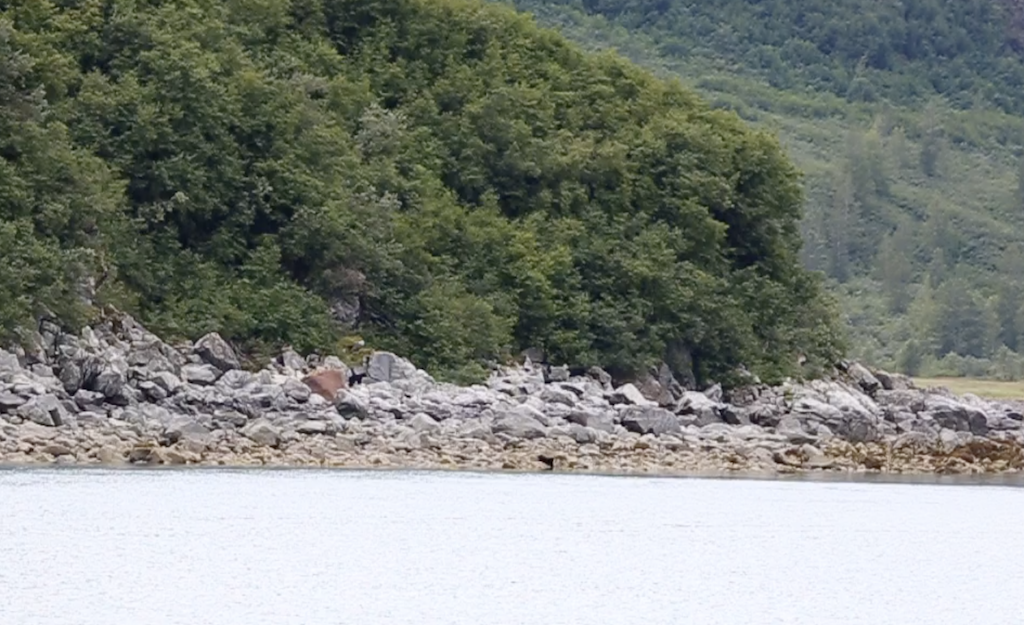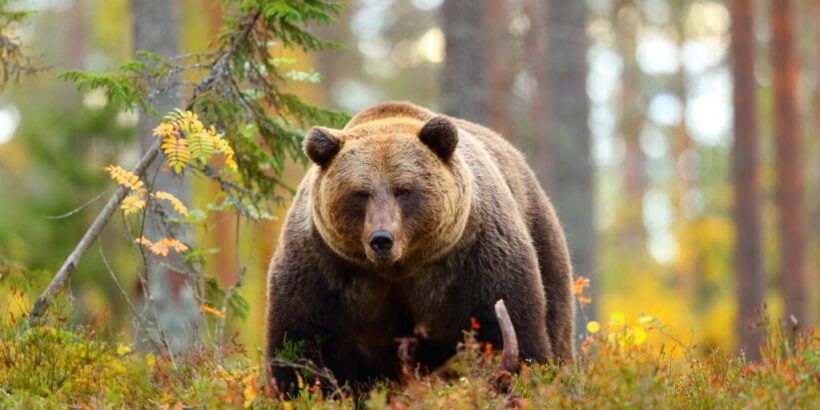Anytime you’re heading to a destination with a lot of wilderness it’s a good idea to familiarize yourself with the potential apex predators.
In the case of Colorado, some people wonder if they need to be on the lookout for grizzly bears?
Below, I’ll take a look at whether or not you have anything to worry about and some of that factual and potentially non-factual reports that we’ve seen over the years.
Table of Contents
Are there Grizzly Bears in Colorado?
The general consensus is that there are no longer any grizzly bears living in the wild within the state of Colorado. However, there are somewhat regular isolated (unconfirmed) sightings of grizzly bears and some people believe that they could exist in small numbers in remote mountain areas of Colorado.

Grizzly Bears in Colorado: a brief history
Grizzly bears previously ranged from Alaska down to Mexico and even as far east as the western shores of Hudson Bay.
So they definitely called Colorado home for a long time.
However, their population in the continental US significantly decreased due to hunting and habitat loss from settlement and agriculture expansion. The people came and the bears exited.
Today, grizzly bears can be found in many places in Alaska and in portions of the northwestern United States, which includes Washington, Idaho, Montana, and Wyoming.
Places like Yellowstone and Grand Teton National Park are places you can see them, as an estimated 700 bears live in the Yellowstone area. And they are reportedly expanding their presence, slowly making their way south.
But we’re talking about confirmed sightings within the state of Colorado here.
The last known and verified encounter with a grizzly bear in Colorado was in September 1979.
There, an elk hunting guide had a bad encounter with a grizzly bear near the headwaters of the Navajo River. He was severely wounded and barely survived after being airlifted to a hospital where he would spend a month recovering.
But as the bear was mauling his leg, he was able to summon the strength to fatally wound the bear by striking it with his arrows. And today, the bears remains are found at the Denver Museum of Science.
That thriller of a story was quite a surprise for many because at that point it had been believed that grizzly bears were extinct in Colorado. In fact, they had believed that the bears had not been around since 1951, almost 30 years prior.
The bear that attacked the hunting guide had a unique genetic signature found only in the San Juan Mountains of southern Colorado and northern New Mexico, which raised the question for some of whether or not more grizzly bears could be in that area.
It’s also interesting because that is in the southern part of Colorado and you would think that if grizzlies were in the state they would be coming from the north which is where we know they exist.
If you do enough research online, you’ll come across reports of people who claim they have seen grizzly bears in Colorado since 1979. Typically, these are reports from people hunting or hiking in pretty remote areas.
Some of them almost come off as Sasquatch-ish sightings while others do appear to be more credible, even if the photo quality is horrible.
We just have no way of verifying these claims without hard evidence and there’s always the chance that some reports may not come in because of concerns of illegal hunting.
According to Colorado Parks and Wildlife, they are pretty certain there are no grizzly bears in the state and there are not any talks of reintroducing them.
But as we’ve seen if another Grizzly Bear was found in Colorado it wouldn’t be the first time that a siting occurred decades after we thought grizzly bears were no longer present in the state.

Identifying your sighting
If you are in Colorado and spot a bear in the wild it’s almost assuredly going to be a black bear.
Some people get these mixed up with grizzly bears especially whenever the black bears are large and have a beautiful brown coat.
Some black bears, known cinnamon bears even wear a reddish brown coat that can look very similar to grizzlies. Others can be be blondish or even white like a polar bear (although that’s more of a Canada thing).
Probably the easiest way to distinguish a black bear from a brown bear is to look for the pronounced muscular hump on its shoulders. On a recent trip to Alaska we spotted both brown bears and black bears, sometimes from a pretty far distance and this hump (or lack thereof) was the easiest way for me to identify them.

If you get familiar with the facial profile of these two it’s also another way to tell them apart as the grizzly bear has much more of it dish-shaped face whereas a black bear has a straight face profile. (This to me is the second easiest way to distinguish these two.)
Black bears also have pointy ears while grizzly bears have shorter, rounded ears.
One of my favorite things to hear is to “just look for the extra long light-colored claws” when trying to distinguish a grizzly from a black bear as if it’s not going to be too late when you’re that close!
But seriously, if you do have a good look at the bear from a distance, perhaps with binoculars, those large claws could stick out from afar.
Lots of times when you spot wildlife you don’t get a perfect view of the animal, though.
They could be partially submerged in a river or lake, shrouded in thick brush, or moving quickly through a forest at a distance. So often it’s pretty hard to tell exactly what you’re seeing.
To add to the confusion, the physical descriptions of both don’t always line up with what you see. The shoulder hump and face profiles aren’t always so clear-cut as some black bears can take on physical appearances that mimic brown bears (beyond their coat color).

Guaranteed places to see a grizzly bear in Colorado
Now, technically there are grizzly bears in Colorado but these are located at various zoos in wildlife centers such as the Denver Zoo, Rocky Mountain Wild exhibit at the at Cheyenne Mountain Zoo, and The Wild Animal Sanctuary.
And, as mentioned you can see grizzly bears (no longer alive) at the Denver Museum of Nature & Science, where you can also view other types of black bears up close and maybe help you identify them better.
But if you’re asking this question, the chances are you’re wondering about the encounters in the wilderness….
Final word
The general consensus is that there are no longer any grizzly bears in the state of Colorado and that the last confirmed sighting was in 1979.
With that said, some people do believe that grizzly bears could still live in some of the remote areas of Colorado such as in the San Juan mountains.
The bears have popped up unexpectedly before so it’s hard to 100% rule out the possibility of grizzly bears living in Colorado, though a siting would be exceptionally rare.
Daniel Gillaspia is the Founder of UponArriving.com and the credit card app, WalletFlo. He is a former attorney turned travel expert covering destinations along with TSA, airline, and hotel policies. Since 2014, his content has been featured in publications such as National Geographic, Smithsonian Magazine, and CNBC. Read my bio.

